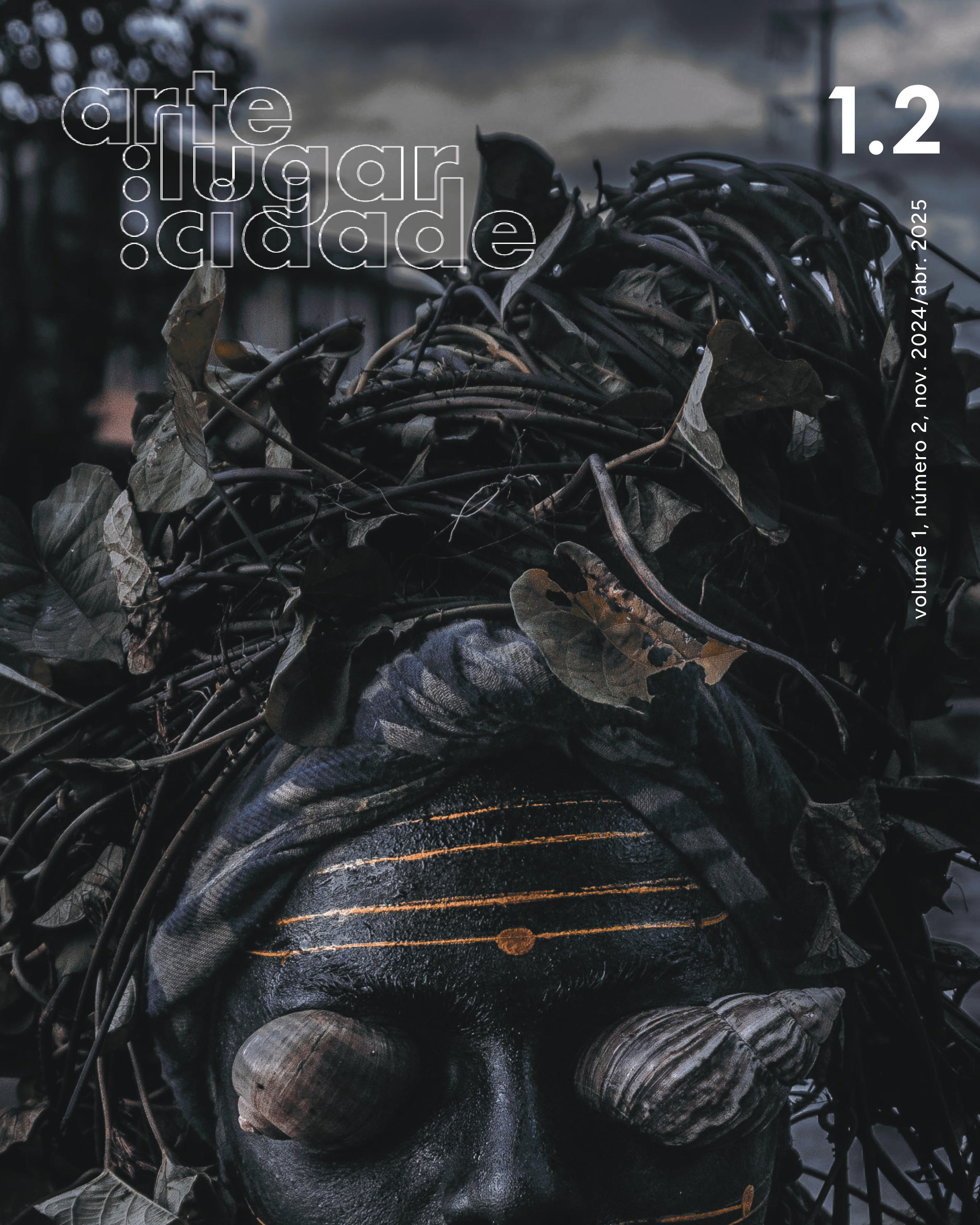Colonizing Flow: The Aesthetics of Hydropower and Post-Kinetic Assemblages in the Orinoco Basin
DOI:
https://doi.org/10.22409/arte.lugar.cidade.v1i2.65130Keywords:
water, infrastructure, artAbstract
Even amid increasing climate instability, faith in hydroelectric megaprojects continues worldwide. This situation compels a revision of the human-nature relations historically interwoven into such infrastructure. This article explores hydropower infrastructure as “concrete semiotic and aesthetic vehicles” (Larkin) of developmentalist discourses and material structures that entangle humans and nonhumans. I retrace these relations through historic and modern conceptions of the Orinoco River as a source to be colonized. I analyze the aesthetic and discursive valences of hydroelectric infrastructure and industrial-scale artworks built there in the mid-twentieth century by linking them to national narratives of industrialization. By attending to recent interruptions of hydroelectric production in light of new materialist thinking, I reframe Venezuelan hydroelectricity as an assemblage shaped by human feats of engineering and art and by the “vibrant matter” (Bennett) of nonhuman actants.
References
Bakke, G. (2016, maio 17). The Electricity Crisis in Venezuela: A Cautionary Tale. The New Yorker. http://www.newyorker.com/tech/elements/the-electricity-crisis-in-venezuela-a-cautionary-tale .
Bennett, J. (2010). Vibrant Matter: A Political Ecology of Things. Duke University Press.
Boulton, A. (1998). Art in Guri. C.V.G. Electrificación del Caroní (EDELCA).
Coronil, F. (1997). The Magical State: Nature, Money, and Modernity. In Venezuela. University of Chicago Press.
Cruz Diez, C. (2009). La construcción de un lenguaje. In Alfredo Boulton and His Contemporaries (pp. 228-231). Museum of Modern Art.
Guevara, R. (1978). Arte para una nueva escala. Maraven S.A.
Larkin, B. (2013). The Politics and Poetics of Infrastructure. Annual Review of Anthropology 42(3), 327-343.
Montilla, G., Marcano, A., & Castro, C. (2004). Air Intake at Guri Dam Intake Operating at Low Heads”. In: F. Yazdandoost & Jalal Attari (Eds.). Hydraulics of Dams and River Structures (pp. 69-78). A. A. Balemka Publishers.
Moore, J. (2015). Capitalism in the Web of Life. Verso.
Nye, D. E. (1994). American Technological Sublime. The MIT Press.
Swyngedouw, E. (2015). Liquid Power: Contested Hydro-Modernities. In: Twentieth-Century Spain. The MIT Press.
Traba, M. (1974). Finale: Allegro con fuoco: Cinéticos y experimentadores. In Mirar en Caracas (pp. 123-133). Monte Ávila Editores.
Traba, M. (2009). Finale: Allegro con fuoco. In Alfredo Boulton and His Contemporaries (pp. 278-284). Museum of Modern Art.
Von Humboldt, A. (1852). Personal Narrative of Travels of the Equinoctial Regions of America, during the Years 1799-1804. (Trad. Thomasina Ross). Henry G. Bohn.
Wittfogel, K. (1955). Developmental Aspects of Hydraulic Civilizations. In J. H. Steward et al (Eds.). Irrigation Civilizations: A Comparative Study. Pan American Union Social Sciences Monographs.
Downloads
Published
How to Cite
Issue
Section
License
Copyright (c) 2024 Lisa Blackmore; Ana Carolina Tonetti

This work is licensed under a Creative Commons Attribution-NonCommercial-NoDerivatives 4.0 International License.


